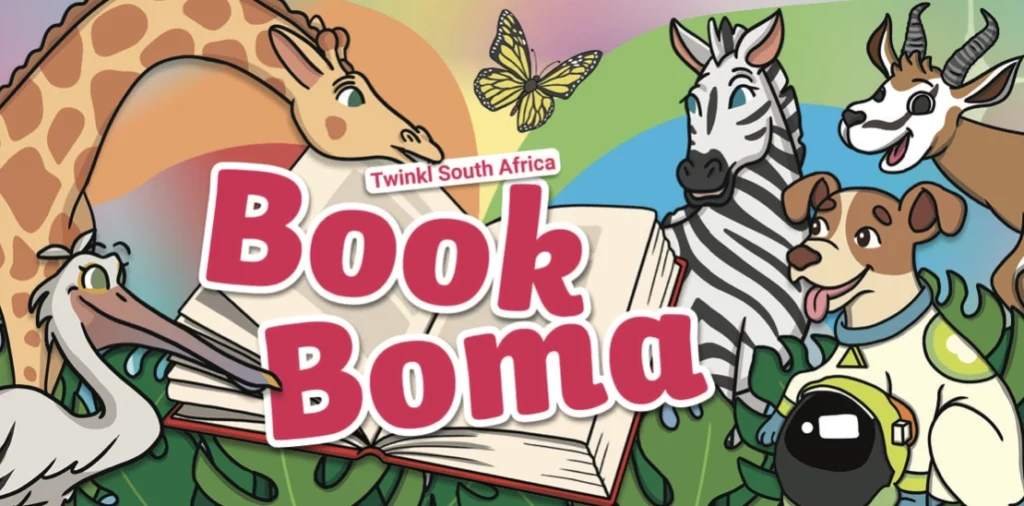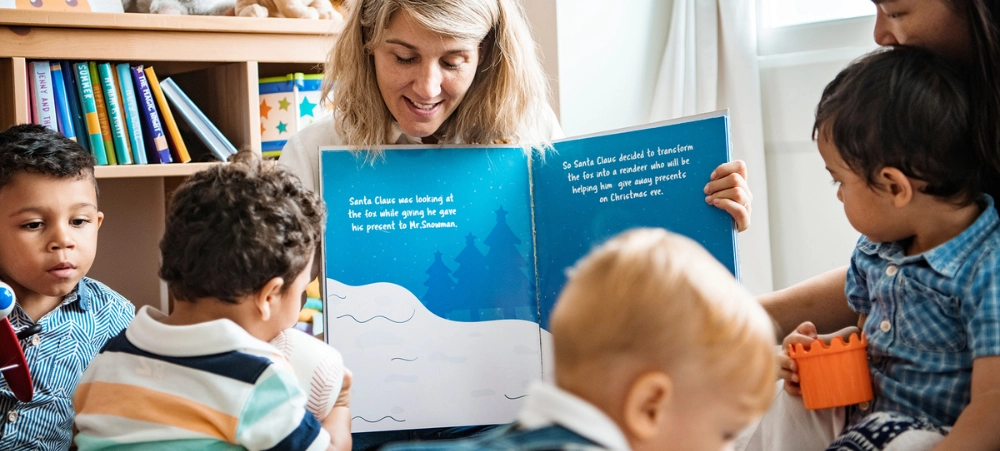Reading is not just a fun activity—it’s an essential part of a child’s early development. Through stories, preschoolers build language skills, expand their imaginations, and learn about the world around them. Books help children understand emotions, explore different cultures, and develop a love for learning.
The Benefits of Reading to Preschoolers
Language Development:
When you read to preschoolers, they are exposed to a wider vocabulary and richer sentence structures. This helps them expand their language skills and improves their ability to express themselves. The more stories they hear, the more words they learn—and the more confident they become in their communication.
Cognitive Skills:
Listening to stories helps preschoolers develop their attention span, memory, and comprehension. As they follow a narrative, they start to recognise patterns, understand cause and effect, and predict what might happen next. These cognitive skills are crucial for their future learning.
Emotional Understanding:
Stories often explore emotions, helping children understand their own feelings and those of others. As they hear about characters facing challenges, they learn empathy and how to cope with different situations. This emotional intelligence builds a solid foundation for their social interactions.
Creativity and Imagination:
Reading stories encourages children to use their imaginations. They picture characters and settings in their minds, which helps develop their creativity. Stories also help preschoolers make sense of the world by encouraging them to think beyond the present and consider “what if” scenarios.

Bonding Time:
Storytime is a wonderful opportunity for bonding. Sitting together, sharing a book, and discussing the characters or the plot strengthens the relationship between caregivers and preschoolers. It also creates a calm, loving environment that children look forward to.
Choosing the Right Stories for Each Stage
Children benefit from different types of stories at different stages of their preschool journey. Here’s a guide to help you choose the right ones.
For Babies and Toddlers (0–3 years):
At this stage, stories should be simple, with repetitive phrases and vibrant pictures. Books with bright colours, large illustrations, and interactive features (like flaps to lift or textures to feel) engage their senses. Short, rhythmic stories are ideal, as they capture attention and help build listening skills. Nursery rhymes and songs are also fantastic choices at this age.
For Young Preschoolers (3–4 years):
Preschoolers at this age enjoy more complex stories with a beginning, middle, and end. Simple narratives that follow a character through a challenge or adventure are perfect. Stories about familiar routines (e.g., going to the doctor or the first day of school) are especially comforting. Look for books that introduce basic concepts such as numbers, colours, shapes, or animals.
For Older Preschoolers (4–5 years):
As children grow older, their attention spans increase, and they enjoy more detailed stories with deeper plots and more developed characters. You can introduce fairy tales, fables, and stories with moral lessons at this stage. Books that encourage problem-solving, such as characters overcoming obstacles, are also great for this age group. Look for stories that spark curiosity about the world, nature, and different cultures.
Explore More with Twinkl’s Ebooks and Reading Resources
If you’re looking for high-quality, age-appropriate stories, Twinkl offers a wide range of beautifully illustrated ebooks and reading materials designed for young children. From interactive picture books and early reader stories to engaging phonics activities, Twinkl’s resources make it easy to nurture your child’s love of reading. Whether you’re cuddling up for bedtime or exploring new topics, these books provide endless opportunities for learning and discovery.

Discover Twinkl Picture Stories:
Twinkl’s Picture Stories are perfect for Foundation Phase learners. In these captivating tales, certain words are cleverly replaced with pictures, making reading an interactive adventure. This approach boosts visual literacy, expands vocabulary, and strengthens comprehension as learners make connections between images and words. The combination of text and visuals sparks imagination, enhances storytelling skills, and fosters a love of reading.
By exploring Twinkl’s wide variety of ebooks and picture stories, parents and caregivers can create meaningful reading experiences that support language development and inspire curiosity.

Stories are not just entertaining—they play an essential role in a preschooler’s development. Reading to young children enriches their language, cognitive abilities, and emotional growth while fostering creativity and a lifelong love for books. By choosing the right stories for their age, caregivers can create an enriching, enjoyable experience that lays the groundwork for a bright future of learning.
Let’s make story time a regular part of every child’s day!
Learn more at: https://www.twinkl.co.za/l/yxsux
The company provides high quality, online learning materials and services, which are all teacher-created and checked.
Twinkl offers over 1 million resources, with new content added daily. This ranges from schemes of work and assessments to augmented reality games and much more.
Twinkl is used and trusted by schools and educators in over 200 countries and regions, including primary and secondary school teachers, nursery workers and parents.
Twinkl has over 1400 team members based in its two Sheffield offices and remotely around the globe, including a large team in South Africa.
More information can be found at twinkl.co.za
Our story:
The idea for Twinkl came to Jonathan and Susie Seaton when Susie was working as an Early Years teacher and couldn’t find the materials she needed for her lessons online. As a result, Susie was working evenings and weekends to make resources from scratch.
Speaking to colleagues and friends, the couple found that Susie was not alone in her situation. So, to help other teachers, they began creating and publishing educational resources online from their spare bedroom.
The business grew quickly and organically as educators embraced the high-quality materials. The team grew quickly too, with current and former teachers, as well as experts in content and design soon joining Jonathan and Susie in their mission 'to help those who teach.'
Jonathan and Susie are delighted that Twinkl is now taking this mission across the world, returning time and energy to educators that is better spent in the classroom with their pupils or on themselves at home.





